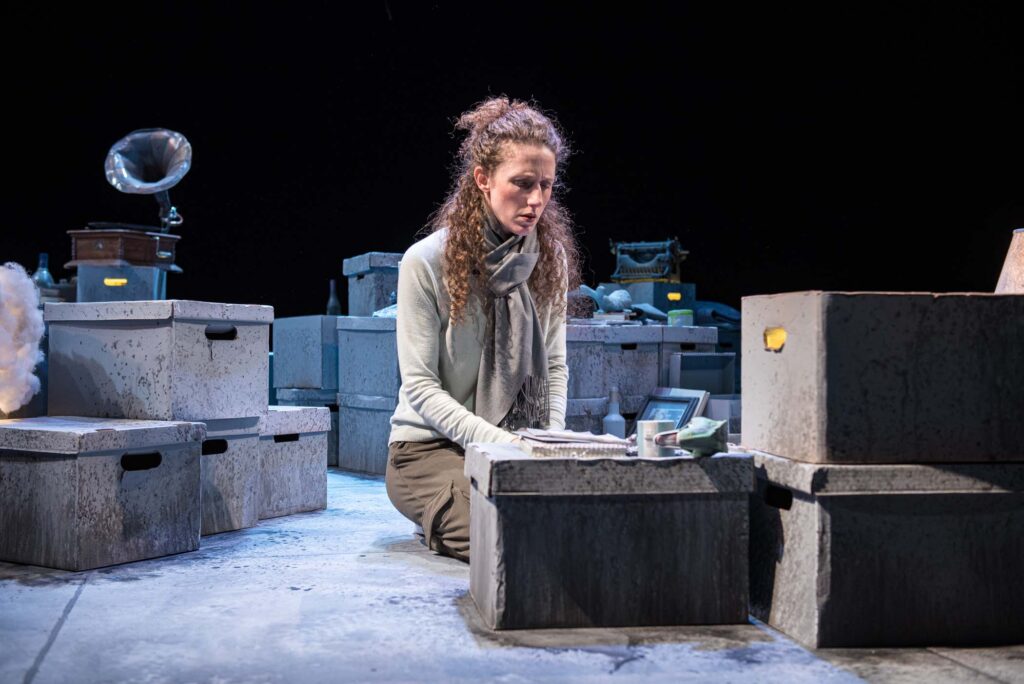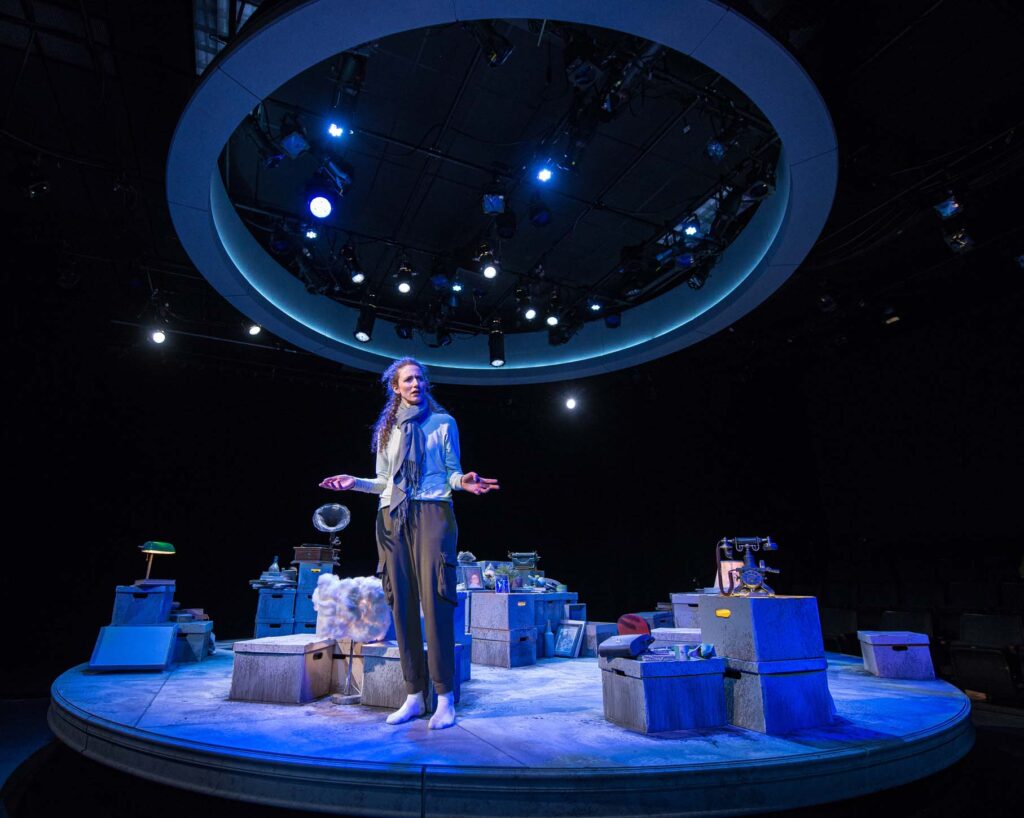
by Jeff Grygny
In a little town near London, Elizabeth Sawyer was accused of killing her neighbor with magic, of consorting with the devil (who appeared as a black dog named Tom), and of various other profanities and blasphemies. She was tried and executed as a witch in the reign of King James I in 1621.
Elizabeth’s story inspired a popular play that was performed that same year. Rather surprisingly, It depicted her as a poor, lonely outcast who only takes up witchcraft when she has no alternative. “Tom” was played by an actor—I love to think, in a dog costume. The Witch of Edmonton worked Elizabeth into a narrative web of family drama, murder, infidelity, and a bit of comedy. It was a big hit, kind of like one of today’s streaming miniseries.
And now, 400 years later, Jen Silverman, “one of the most-produced playwrights in the country,” has adapted The Witch of Edmonton into a fascinating new piece, Witch, which is currently playing in an artful production by Renaissance Theaterworks. She’s trimmed the story and shuffled the characters around, but retained the prestige drama combo of family intrigue, wicked satire, metaphysical peril, and even a bit of Harlequin romance, all bundled into a tight, compelling plot that keeps us in a state of pleasant indeterminacy.
Elizabeth herself opens the play. Her hair is gray, but neatly bound. Her dress shows the signs of many launderings. As represented by the formidable Marti Gobel, she radiates warmth, intelligence, and weariness. “I’m not arguing for the end of the world,” she says, “but then again, maybe I am.” And in a gnomic, insinuating speech, she adds “Do I have hope that things can get better?”
Then we meet the devil—or a devil, at any rate. Instead of a talking dog, we have Neil Brookshire, debonair in a good haircut. A traveling salesman, just arrived in town, scouting for prospects. But though his talk is all agreeable—no pressure—his unwavering smile and the dead look in his eyes would raise a real dog’s hackles. He’s skillfully peeling off the defenses of a foppish young man named Cuddy, the son of the local lord. Moving on, he next easily uncovers exactly what Cuddy’s rival would trade for his immortal spark. We notice that, though everyone is in 16th century garb, they’re talking like modern urbanites, using anachronistic phrases like “full disclosure,” and “cone of silence.” With all the eventual dynastic rivalry and erotic complications, it can feel more like an episode of Succession than The Lady’s Not for Burning. But Silverman’s dialog is witty and fun to hear. When Scratch pays his inevitable visit to the local witch, well, let’s just say it’s not what anyone expected.

The acting is all first-rate: along with Gobel and Brookshire, Reese Madigan brings a Lear-like befuddled grandeur to the role of Sir Arthur, mooning over the never-seen painting of his (dead?) wife. (I wish someone would explain his very modern bandana). Joe Picchetti brings fire to the role of the ambitious Frank; Eva Nimmer makes herself visibly invisible as the beleaguered maidservant Winnifred, whom he brutally betrays. And as Cuddy, James Carrington gives one of his best performances ever, with honesty, complexity, and humor.
The production crew brings the script to life wonderfully, each in a slightly different way. Director Suzan Fete’s stage direction is clean and unfussy, with a fine ear for dramatic and comic timing. The costumes by Amy Horst look rich and lived-in, except for Cuddy’s outfits, which are as clashingly queer as his sexuality. Jeffrey D. Kmeic has created a spectacular sculptural ceiling reminiscent of the dried herbs used by village healers (Elizabeth doesn’t mix any potions, though: she’s only a witch by reputation). And Josh Schmidt’s sound design quotes an old festive carol, electronically modified to evoke disquiet.
Historians cite many reasons for the great witch trials that swept Europe in the 16th and 17th centuries, including “the little ice age,” a period of global cooling that brought about famines and plagues. Feminist historians have also noted that many people found easy scapegoats for the time’s social unrest in “unruly” and isolated women; a phenomenon Caryl Churchill rigorously explored in her play Vinegar Tom.
In a 2015 interview, Silverman said “I want to write aggressive, highly-structured, darkly comedic plays, often involving women or queer characters, often exploring various facets of identity and legacy and home-coming and institutional violence.” So what drew her to an antique play about a witch and a devil? (Was it the talking dog? Her play Blink features a vengeful ghost cat, so, maybe.)
Or maybe it’s because as an intelligent outcast, Elizabeth can see outside the conventions of her culture, that the endless stupid cycle of drunken lords and scheming brothers struggling for power is just one way of running a society, and one day, maybe, there might be something different. Surely Silverman doesn’t want us to simply conclude that the devil is the patriarchy. But then again, maybe she does.
Renaissance Theaterworks presents
Witch
by Jen Silverman
playing through November 12
https://www.r-t-w.com/shows/witch/ttps://www.r-t-w.com/shows/witch/


